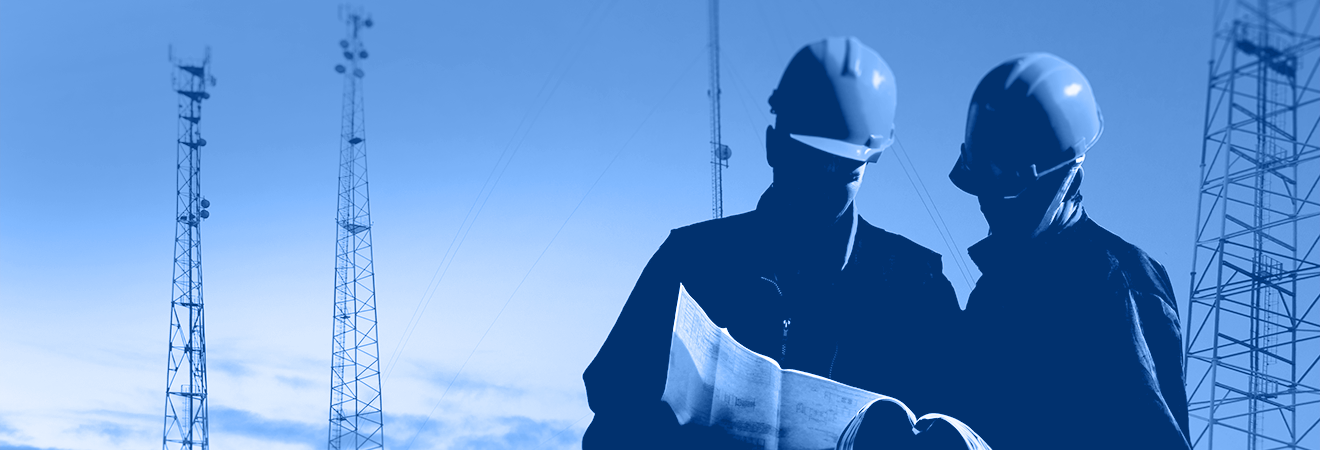
News
Reliable data communication, finally within reach
When people’s lives are at stake or high costs are incurred due to outages or calamities, large organisations and governments rely on mission-critical communications.
With one push on the button of the walkie-talkie, one is in direct contact with the control room and communication is reliable and clear.
Just think of the vehicle that NASA recently landed on Mars, which we were able to follow with images from millions of kilometres away. But sharing data such as photos, videos and files via walkie-talkies is still not possible.
To meet the growing need for data, PrioCom has developed a service that does meet all the functionalities. So with the reliability of the traditional mission critical walkie-talkie system and with the added functionality of sending data over the national network. We will explain here how this technique works and what advantages it offers.
Existing mission-critical radio networks lack the functionality to send data. Minister Grapperhaus of Justice and Security also states in a letter to the Lower House that the current C2000 voice network, based on the TETRA Standard, cannot meet the growing need for services that require data to be sent. PrioComs bridges these two needs and enables the reliable transmission of data according to the mission-critical standard. When data traffic is used in large numbers, PrioCom guarantees priority on the national network.
Sending data mission-critically
A regular public broadband network can send data such as photos and videos, but until recently could not be considered mission-critical. Total failure of the national mobile network occurred regularly. Transmission was not fast enough for reliable group communication and networks became overloaded due to many users wanting access simultaneously or large groups of people gathering at one location.
Sending mission-critical data over a public network is only possible if technology is up to scratch.
There is a growing need for services for which data needs to be sent, such as photos, video, files and GPS positions. The current mission critical TETRA networks such as C2000 lack this important function. Traditional radio communication based on the TETRA standard has long been the most reliable way for mission-critical users to communicate, except that no data can be sent. PrioCom unites the user’s needs and offers the solution.
Guaranteed mission-critical communication on the public network
Not every mobile network is suitable for mission-critical applications. Fortunately, PrioCom has developed a solution in cooperation with T-Mobile that guarantees mission-critical communication on a public network. Via a shielded part of the network, mission critical voice and data communication is sent. A robust network design forms the basis for this. The core of the network is set up according to a high availability configuration. The infrastructure is redundant. The network offers sufficient coverage and the transmitters are equipped with emergency power systems.

A reliable infrastructure alone is not enough. The network must be set up for critical communications. This includes a logical separation of the “normal” users by means of a separate access point. The systems for mission-critical group communication have to offer sufficient possibilities, be placed in the heart of the network and optimal security measures have to protect the users.
PrioCom provides the mission-critical functionality on the protected prioritised part of the T-Mobile public network. In other words, the communication on this protected part of the network is prioritised over the communication of consumers and business users.
Evolution in current technology
Nationwide coverage
The nationwide coverage of the mobile network is so advanced with the number of transmitters and overlapping coverage areas that the chance of complete failure of this network is negligible. The transmitters are built redundantly in rings and monitored by emergency power supplies. So much overlap has been created within this network that the whole continues to function when one or more components break down or fail. The chance of this network failing completely is virtually zero. National Tetra networks, on the other hand, work with adjacent coverage areas; if a transmitter fails in one area, there is a hole in the network. This is rarely the case with national coverage on the public network, especially in urban areas. Network reliability is of great value, with traffic routes finding their way dynamically and quickly, and a fault in the network being quickly detected and circumvented.
Redundancy in the network ensures optimum reliability
Priority on the network during peak hours
The network is stable, fast and reliable. The biggest risk in consumer mobile networks is that so many people gather in one place that the network capacity is no longer sufficient. Examples are the inauguration of a football team, if everyone starts calling and Whatsapping en masse at New Year’s Eve or disaster tourism, where many people go to watch and send videos. But also when there is suddenly a big traffic jam because of an accident in a tunnel and everyone starts watching Netflix or social media in their car. Unprepared events with many people using the network en masse cause capacity problems. PrioCom has solved this by guaranteeing priority over other users. A priority that guarantees that the shielded part of the network meets the mission-critical standard. So should one of these situations occur in practice and an emergency worker presses the talk key to get in touch with the control room, the other users are simply pushed off the network to give the emergency worker access. This makes it mission-critical on a national level.
In case of mass data traffic, PrioCom has priority on the network.
No concessions in security
Another important facility is that the service takes place in a protected part of the network, guaranteeing its safety. PrioCom has done everything to make sure that malicious people cannot access the service or the devices on which the service is running. Because PrioCom does not route the traffic over the internet but places the equipment inside the operator’s network, there is almost no risk. All suppliers and services are certified to the future proof 3GPP standard for mission critical communications.
PrioCom is built in a shielded part of the network and has an ecosystem set up according to the standards of the 3GPP. All components in the ecosystem, such as the application, the network, the equipment, masts, transmitters and various devices are certified according to this 3GPP standard. Because this standard continuously evolves, PrioCom is future-proof for prioritised mission-critical voice and data traffic. Every link in the chain is selected, assessed and if necessary adapted to keep reliability of the entire service as high as possible.
Time savings and control
With this solution, enforcers, emergency responders and other PrioCom users are firmly in control. They are in direct contact with the control room, can ask colleagues for help and can leave the control to their helpline. They can send pictures of situations on the spot, know where their colleagues are by GPS location determination and know that their communication works, no matter where they are in the coverage area and no matter what situation arises.
All the functionality of the old reliable walkie-talkies, but now on a smart device with which you can also send data such as photos, videos or GPS location determination. That saves so much time and provides so much clarity! Not for nothing do the emergency services and law enforcement officers who use PrioCom call their smartdevice their lifeline. That says it all.
PrioCom sets the standard for mission-critical voice and data communication. Of course there is much more we can tell you and we are happy to explain it to you.
We are ready for the future, are you?
